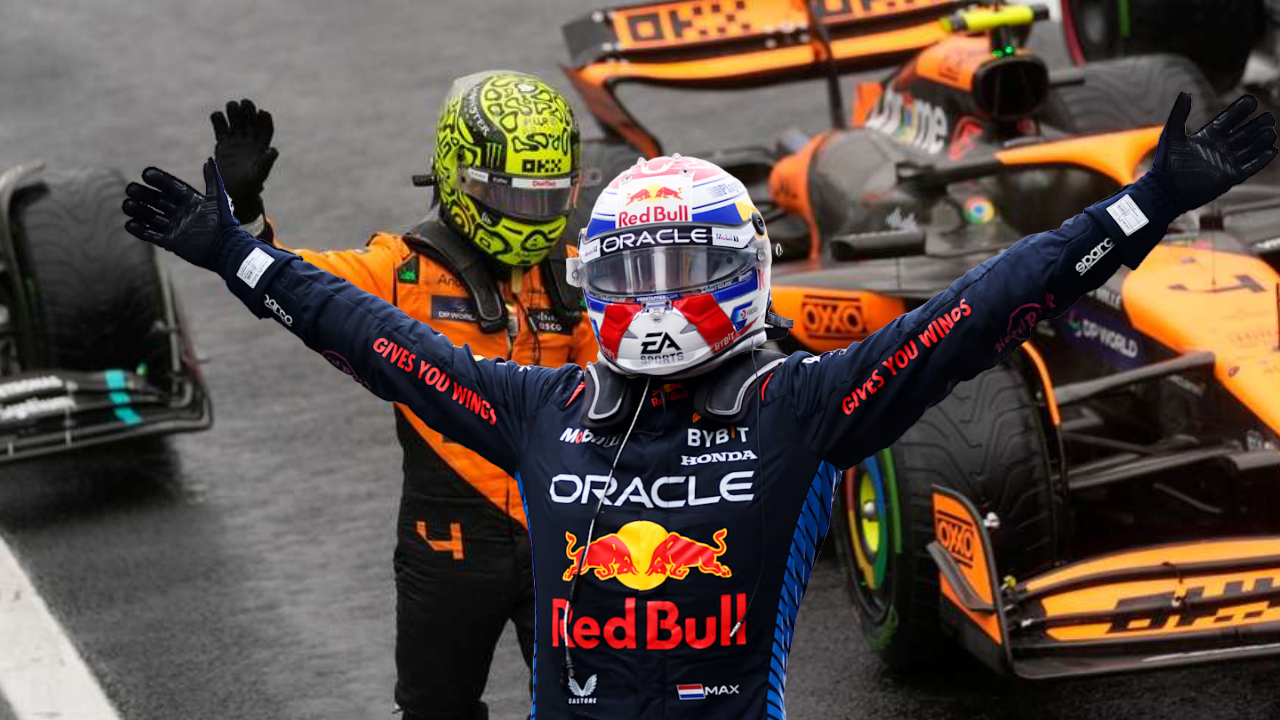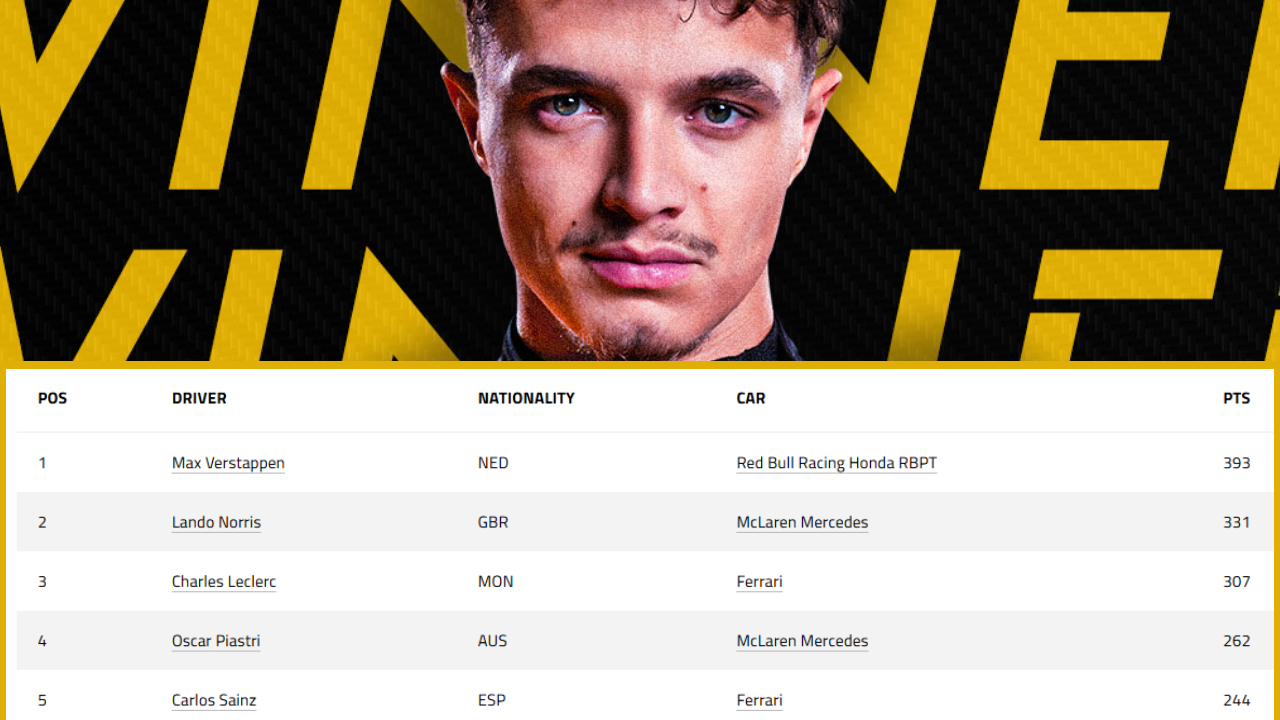In a race marked by breathtaking skill and resilience, Max Verstappen’s victory at the Sao Paulo Grand Prix exemplified a masterclass in wet-weather racing, effectively sealing his dominance in the 2023 Formula 1 season. Starting from 17th on the grid, Verstappen defied the odds and surpassed his competitors in an iconic performance that has already been touted as one of the greatest drives in F1 history.
Table of Contents
Max Verstappen’s Historic Win
Max Verstappen’s performance at the Sao Paulo Grand Prix was more than a mere victory; it was a milestone in his career, a race that his team principal, Christian Horner, described as “one of the great drives in F1.” What made Verstappen’s win so remarkable was his starting position—17th on the grid, a daunting challenge that even the most experienced drivers would find difficult to overcome. Heavy rain and tricky conditions only heightened the drama, but Verstappen thrived under pressure.
Verstappen had a poor qualifying session, which left him starting lower on the grid than usual. Rain had disrupted the Saturday session, pushing qualifying into Sunday morning, where miscalculations and a red flag disrupted Red Bull’s strategy. As a result, Verstappen found himself further penalized, taking a five-place grid penalty due to engine changes, pushing him back to 17th. Despite this setback, Verstappen remained undeterred, demonstrating remarkable tenacity in a race filled with unpredictable conditions.
A Race of Endurance and Precision
In a nail-bitingly tense race, Verstappen’s ability to control his car in wet conditions was unmatched. The first lap saw him gaining six positions, showing both his skill and determination. The rain-soaked track did not deter him; instead, he seemed to use the adverse conditions to his advantage. As the race progressed, Verstappen found himself in the thick of the action, moving up swiftly through the pack and strategically positioning himself to capitalize on every opportunity.
Verstappen’s progress was electrifying, particularly as he approached a four-car group competing for third. Despite starting at the back, by lap 12, Verstappen was within eight seconds of Norris and George Russell, showcasing his incredible pace and precision in challenging conditions. This early progress set the stage for what would become one of the most memorable races of the season. His comfort with the car and familiarity with wet conditions allowed him to exploit every advantage available, putting him in a position to lead as the race unfolded.

Tactical Pit Stops and Strategy
Strategy played a crucial role in Verstappen’s success. At around one-third distance, the rain intensified, prompting several drivers, including Russell and Norris, to make a pit stop for fresh tires under a Virtual Safety Car (VSC). Verstappen and Alpine’s Esteban Ocon opted to stay out—a gamble that would soon pay off. Verstappen described this choice as “very sketchy,” as worn tires can make it nearly impossible to maintain control on a wet track. However, his decision to avoid an early pit stop ultimately worked in his favor when the VSC turned into a full safety car, followed by a red flag.
The timing was fortuitous. The red flag allowed Verstappen and Ocon to make a tire change without sacrificing track position, giving them a tactical advantage that the other drivers had not anticipated. This break enabled Verstappen to restart the race near the front of the pack, putting him in an optimal position to contend for victory.
The Restart: A Critical Move
As the race resumed, Verstappen’s aggressive approach to the restart underscored his unyielding determination to win. With Ocon initially leading the race, Verstappen seized his moment during a safety car restart. He made a decisive move, lunging from a considerable distance into Turn One to overtake Ocon and secure the lead. Once in front, Verstappen established a commanding position, demonstrating both control and speed that his competitors could not match. This strategic move further illustrated Verstappen’s prowess and willingness to take calculated risks when the stakes were high.
The Sao Paulo Grand Prix had seen multiple restarts, each one a new opportunity for Verstappen to demonstrate his skill. His audacious maneuver on Ocon at Turn One was a defining moment, a decisive act that left no doubt about his intent. From that point forward, Verstappen remained untouchable, holding his lead until the finish line and securing what many described as a career-defining victory.
Impact on Lando Norris and the Championship Standings

While Verstappen’s victory stole the spotlight, the impact on Lando Norris was significant. Entering the race, Norris held faint hopes of challenging Verstappen for the world title. However, the Sao Paulo Grand Prix all but ended those dreams. Although Norris had showcased his potential by winning the sprint race on Saturday and starting from pole on Sunday, he was unable to maintain his position, eventually finishing sixth.
Norris’ journey this season has been marked by impressive performances, including consistent podium finishes. Yet, Verstappen’s lead has remained unassailable. With his win in Sao Paulo, Verstappen extended his lead over Norris to 62 points, effectively closing the door on any remaining title hopes for the British driver. Only 86 points remain in the final three races, making it increasingly unlikely for Norris to close the gap. Should Verstappen maintain a 60-point lead after the upcoming race in Las Vegas, he would secure the championship title with two races to spare.
Verstappen’s Focus on Clean Races Ahead
After the race, Verstappen expressed a clear goal for the remainder of the season: he wants “clean races” as he approaches the final stretch. Rather than focusing on the prospect of clinching the title early in Las Vegas or celebrating his accomplishments, Verstappen remains intensely focused on delivering consistent performances. He admitted that his emotions during the Sao Paulo race were a “rollercoaster,” oscillating between frustration and elation, as he first faced setbacks in qualifying but ultimately achieved an unforgettable victory.
The Dutch driver’s concentration on the final races underscores his maturity and understanding of the sport’s unpredictable nature. Verstappen’s desire for “clean races” reflects a commitment to avoid unnecessary risks, ensuring that his title pursuit remains straightforward. Despite holding a commanding lead, he refrains from discussing the championship in definitive terms, instead emphasizing a steady approach in the upcoming races.
An Iconic Win Amidst Challenging Conditions
Max Verstappen’s triumph in Sao Paulo will be remembered not only for the victory itself but also for the sheer tenacity and skill he demonstrated in difficult circumstances. His ability to control his car in wet conditions and his tactical decision-making on the track solidified this as one of his greatest performances. In the annals of Formula 1, this race will stand as a testament to Verstappen’s prowess, particularly in adverse conditions.
With just three races remaining, the Formula 1 world now eagerly anticipates the upcoming events in Las Vegas, Qatar, and Abu Dhabi. Verstappen’s victory has set a high bar for what is to come, and the Sao Paulo Grand Prix will likely serve as a defining moment in his career. His unwavering focus on securing “clean races” moving forward suggests that he is not only concerned with winning but also with leaving a legacy of discipline and skill.
